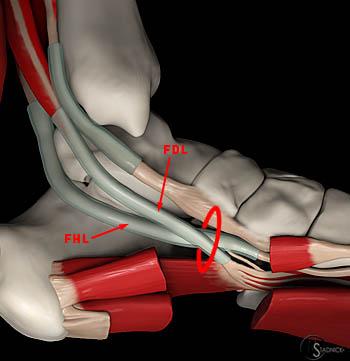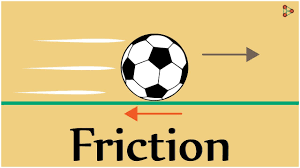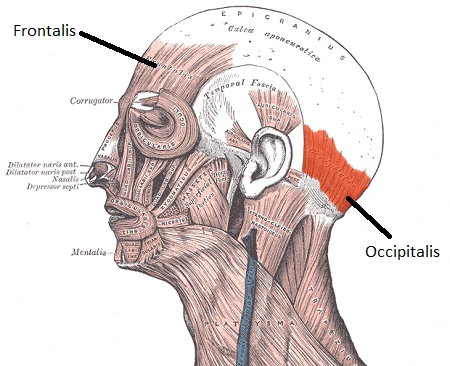Eclectic approach
Table of Contents
BASIC OF AN ECLECTIC APPROACH
- Eclectic approach is a method of language education that combines various approaches and methodologies to teach language depending on the aims of the lesson and the abilities of the learners. Different teaching methods are borrowed and adapted to suit the requirements of the learners. It breaks the monotony of the class. In addition, It is a conceptual approach that does not merely include one paradigm or a set of assumptions.
Introduction
- There is little empirical evidence as to whether an antegravite and eclectic approach or a specific concept approach is the most effective when working with children. It appears to the authors that there are a number of common factors to all approaches and philosophies, even where their implementation and emphasis may differ.
* They are:
> Assessment and planning are necessary at all stages
> Early treatment is essential
> Teamwork is important
> The child must be motivated and involved
> Parents should be involved and supported.
ELECTISUM
- Eclecticism is a conceptual approach that does not hold rigidly to a single paradigm or set of assumptions, but instead draws upon multiple theories, styles, or ideas to gain complementary insights into a subject, or applies different theories in particular cases. However, this is often without conventions or rules dictating how or which theories were combined.
- It can sometimes seem inelegant or lacking in simplicity, and eclectics are sometimes criticized for lack of consistency in their thinking. It is, however, common in many fields of study. For example, most psychologists accept certain aspects of behaviorism but do not attempt to use the theory to explain all aspects of human behavior.
- Eclecticism in ethics, philosophy, and religion is also known as syncretism
APPROACH METHOD
There are varied approaches and methods used for language teaching. In an eclectic approach, the teacher can choose from these different methods and approaches:
> Grammar-translation Method: It is a method of teaching languages by which students learn grammatical rules and then apply those rules by translating between the target language and the native language.
> Direct Method: In this method, the teacher refrains from using the students’ native language. The target language is directly used for teaching all four skills—listening, speaking, reading, and writing.
> Structural-situational Approach: In this approach, the teacher teaches language through a careful selection, gradation, and presentation of vocabulary items and structures through situation-based activities.
> Audio-lingual/Audio-visual Method: In this style of teaching students are taught through a system of reinforcement. Here new words and grammar are directly taught without using the students’ native language. However, unlike the direct method, the audio-lingual method does not focus on vocabulary. Instead, the teacher focuses on grammar through drills and practice.
> Bilingual Method: The word ‘bilingual’ means the ability to speak two languages fluently. In the bilingual method, the teacher teaches the language by giving the mother tongue equivalents of the words or sentences.
> Communicative Language Teaching: This approach lays emphasis on the oral method of teaching. It aims to develop communicative competence in students.
> Total-Physical Response: It is based on the theory that memory is enhanced through association with physical response.
> The Silent Way: In this method, the teacher uses a combination of silence and gestures to focus students’ attention.

ADVANTAGES
- The teacher has more flexibility.
- No aspect of language skills is ignored.
- There is variety in the classroom.
- Classroom atmosphere is dynamic.
- The drawbacks of one approach might help the other.
- Multiple intelligences are best developed in the classroom.
- Support for various students’ learning preferences
- These kinds of programmes promote student pride in their heritage, language, communication preferences, and self-identity in addition to negotiating teacher skill development within greater recognition of and respect for cross-cultural and multilingual classroom contexts.
DISADVANTAGES
> It does not lend itself to prediction and control of behavior.
> It’s difficult to identify the relative contributions of each approach.
> Explanation of behavior may become “watered down” when combining many perspectives.
> There are practical difficulties in investigating the integration of the approaches.
> It does not lend itself to hypothesis testing.
DURING TREATMENT

1. Neuro-developmental sequences should be considered but not followed rigidly.
2. Postural mechanisms and normal postural tone should be developed involving
> postural fixation
> antigravity mechanisms
> righting reaction
> equilibrium reactions.
3. Deformity should be prevented.
4. Afferent stimuli can be used
> touch
> temperature
> vision
> pressure
> stretch
> hearing
5. Sensorimotor experiences should be encouraged
> Voluntary skilled movement
> cognition
> perception
> function
6. Gross motor activities generally precede fine motor movements.
7. Repetition & reinforcement are necessary
8. The development of movement should lead to purposeful activity and independent function.
Types of Eclectic Therapy
There have also been a number of specialty forms of eclectic treatment. Each time, these methods use a variety of tactics to cater to the particular demands of the person. These kinds include, among others:
Brief eclectic therapy
As the name implies, this is a brief kind of eclectic therapy that frequently combines elements of cognitive behavioral and psychodynamic therapies. It is typically used over a limited number of sessions, frequently to address a specific problem. By assisting patients in finding meaning in their horrific experiences and creating new coping mechanisms, this method has been utilized to cure PTSD.
Cognitive Behavioral Therapy
To assist people in understanding how their beliefs affect their relationships, cognitive-interpersonal therapy focuses on elements of cognitive behavioral therapy.
Multi-modal therapy
This type combines many strategies from different therapies as well as aspects of the social-cognitive learning theory. Examining a person’s behavior, mood, senses, visualizations, cognition, relationships, and physical health allows us to determine their unique requirements.
Transtheoretical therapy
This method is concerned with comprehending the phases and procedures of transformation. People may then use this information to work towards accomplishing their objectives, enhancing their relationships, and making good changes in their lives.
Eclectic Therapy Can Help With
People can benefit from eclectic therapy. It can effectively treat a number of disorders and issues, such as:
- Anxiety
- Bipolar disorder
- Coping and adjustment difficulties
- Depression
- Eating disorders
- Personality disorders
- Post-traumatic stress disorder (PTSD)
- Relationship problems
- Selective mutism
- Social issues
- Stress
Effectiveness
According to research, eclectic therapy can be a treatment that is both secure and efficient:
- Selective mutism, an anxiety disease in children characterized by a persistent refusal to speak in a set of social contexts, has been treated successfully using eclectic treatment. This therapy incorporated familial, behavioral, cognitive-behavioral, and psychodynamic theories and techniques.
- Researchers developed an effective eclectic treatment programme for PTSD in a study that was published in the European Journal of Psychotraumatology by combining aspects of psychodynamic and cognitive behavioral techniques.
- According to a 2017 study, children’s anxiety and mental health can be improved using an eclectic strategy that combines art therapy with cognitive behavioral therapy (CBT).
How to Start Eclectic Approach?
Ask your doctor for a recommendation or search an internet therapist directory if you’re interested in considering eclectic therapy. You could think about looking for those or related phrases because eclectic therapists frequently identify themselves as integrative therapists or multi-modal therapists.
Online counseling may potentially be a possibility for you.
In order to get to know you and fully understand your goals, your therapist will ask you questions during your initial consultation. Talking about your past, occupation, personal life, support network, and level of happiness right now may be a part of this initial conversation.
You may then move deeper into setting objectives and determining which approaches could be the most useful for your needs as you establish a therapy connection. These objectives and tactics are flexible in eclectic treatment, so they may be altered as necessary.
Challenges of the eclectic approach
- Can be difficult to maintain a coherent and consistent approach
- Can lead to a watering down of different methods
- May require a deep understanding of the underlying principles of different methods
FAQ
A method of instruction utilized while teaching a second or foreign language is the eclectic approach. Depending on the class objectives and unique student characteristics, this technique incorporates the fundamentals of several language teaching methodologies and approaches.
Children who spend a portion of each day receiving various therapies, such as structured instruction using applied behavior analysis (ABA) techniques, sensory integration and stimulation (brushing and swinging), floortime activities, music lessons, and unstructured play with peers their age, are an example of an eclectic programme.
Direct practice is a part of the eclectic method, which incorporates speaking, listening, reading, and writing. A teacher is free to utilize a variety of materials and methods to teach a certain topic within the framework of principled eclecticism and is not constrained by the guidelines of any one particular approach.
Individualized strategy: Because this kind of therapy is so flexible, your therapist may create a treatment strategy that is tailored to your particular requirements. Engagement: Using a variety of strategies may increase patients’ sense of interest in and involvement in the therapeutic process.
Key concepts of the eclectic approach are:
In order to successfully assist clients in achieving their own goals, an eclectic therapist tries to comprehend each client in all of their complexity. This involves learning about each client’s many characteristics, such as their ideas, feelings, behaviors, relationships, and more.
A type of psychotherapy known as eclectic therapy makes use of a variety of therapeutic modalities. This can include CBT, psychoanalysis, humanistic therapy, and other types of treatment. Eclectic therapists hold that no technique is ideal and that every patient needs a special treatment strategy.
F.C. Thorne is the leading advocate of this kind of counseling. Depending on the circumstances, eclectic therapy combines directive and non-directive techniques.
References
- Eclectic approach. (2023, March 24). In Wikipedia. https://en.wikipedia.org/wiki/Eclectic_approach
- Fritscher, L. (2021, August 11). What Is Eclectic Therapy? Verywell Mind. https://www.verywellmind.com/eclectic-therapy-2671584






